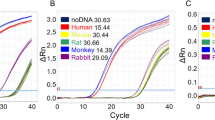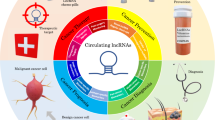Abstract
Cancer treatments can have significant cardiovascular adverse effects that can cause cardiomyopathy and heart failure with reduced survival benefit and considerable decrease in the use of antineoplastic therapy. The purpose of this study is to assess the role of TLR2 and TLR4 gene expression as an early marker for the risk of doxorubicin-induced cardiomyopathy in correlation with early diastolic dysfunction in patients treated with doxorubicin. Our study included 25 consecutive patients who received treatment with doxorubicin for hematological malignancies (leukemia, lymphomas or multiple myeloma), aged 18–65 years, with a survival probability>6 months and with left ventricular ejection fraction>50%. Exclusion criteria consisted of the following: previous anthracycline therapy, previous radiotherapy, history of heart failure or chronic renal failure, atrial fibrillation, and pregnancy. In all patients, in fasting state, a blood sample was drawn for the assessment of TLR2 and TLR4 gene expression. Gene expression was assessed by quantitative reverse transcription PCR (qRT-PCR) using blood collection, RNA isolation, cDNA reverse transcription, qRT-PCR and quantification of the relative expression. At enrollment, all patients were evaluated clinically; an ECG and an echocardiography were performed. The average amount of gene expression units was 0.113 for TLR4 (range 0.059–0.753) and 0.218 for TLR2 (range 0.046–0.269). The mean mRNA extracted quantity was 113 571 ng/μl. As for the diastolic function parameters, criteria for diastolic dysfunction were present after 6 months in 16 patients (64%). In these patients, the mean values for TLR4 were 0.1198625 and for TLR2 were 0.16454 gene expression units. As for the diastolic function parameters, criteria for diastolic dysfunction were present after 6 months in 16 patients (64%). In these patients, the mean value for TLR2 was 0.30±0.19 and for TLR4 was 0.15±0.04. The corresponding values for the patients who did not develop diastolic dysfunction were 0.16±0.07 for TLR2 (P=0.01) and 0.11±0.10 for TLR4 (P=0.2). Our study suggests that TLR4 and TLR2 expression is higher in patients under doxorubicin therapy who develop diastolic dysfunction. This may suggest a predisposition to myocardial involvement, a higher sensitivity to doxorubicin cardiac effects.
This is a preview of subscription content, access via your institution
Access options
Subscribe to this journal
Receive 12 print issues and online access
$259.00 per year
only $21.58 per issue
Buy this article
- Purchase on Springer Link
- Instant access to full article PDF
Prices may be subject to local taxes which are calculated during checkout



Similar content being viewed by others
References
Adamson P, Zile M, Cho Y, Bennett T, Bourge R, Aaron M et al. Hemodynamic factors associated with acute decompensated heart failure: part 2—use in automated detection. J Card Fail 2011; 17: 366–373.
Bruynzeel A, Abou El Hassan M, Schalkwijk C, Berkhof J, Bast A, Niessen H et al. Anti-inflammatory agents and monoHER protect against DOX-induced cardiotoxicity and accumulation of CML in mice. Br J Cancer 2007; 96: 937–943.
Galetta F, Franzoni F, Cervetti G, Cecconi N, Carpi A, Petrini M et al. Effect of epirubicin-based chemotherapy and dexrazoxane supplementation on QT dispersion in non-Hodgkin lymphoma patients. Biomed Pharmacother 2005; 59: 541–544.
Godaly G, Young D . Mycobacterium bovis bacille Calmette Guerin infection of human neutrophils induces CXCL8 secretion by MyD88-dependent TLR2 and TLR4 activation. Cell Microbiol 2005; 7: 591–601.
Jurcut R, Wildiers H, Ganame J, D’hooge J, Paridaens R, Voigt J . Detection and monitoring of cardiotoxicity—what does modern cardiology offer? Support Care Cancer 2008; 16: 437–445.
Komamura K . Similarities and differences between the pathogenesis and pathophysiology of diastolic and systolic heart failure. Cardiol Res Pract 2013; 2013: 1–6.
Lim S . Freund adjuvant induces TLR2 but not TLR4 expression in the liver of mice. Int Immunopharmacol 2003; 3: 115–118.
Malik M, Batchvarov V . Measurement, interpretation and clinical potential of QT dispersion. J Am Coll Cardiol 2000; 36: 1749–1766.
Nakamae H, Tsumura K, Akahori M, Terada Y, Yamane T, Hatashi T et al. QT dispersion correlates with systolic rather than diastolic parameters in patients receiving anthracycline treatment. Intern Med 2004; 43: 379–387.
Neizel M, Korosoglou G, Lossnitzer D, Kühl H, Hoffmann R, Ocklenburg C et al. Impact of systolic and diastolic deformation indexes assessed by strain-encoded imaging to predict persistent severe myocardial dysfunction in patients after acute myocardial infarction at follow-up. J Am Coll Cardiol 2010; 56: 1056–1062.
Park J, Marwick T . Use and limitations of E/e' to assess left ventricular filling pressure by echocardiography. J Cardiovasc Ultrasound 2011; 19: 169.
Proença M . TLR2 and TLR4 polymorphisms influence mRNA and protein expression in colorectal cancer. World J Gastroenterol 2015; 21: 7730.
Puppe J, van Ooyen D, Neise J, Thangarajah F, Eichler C, Pfister R et al. Prospective evaluation of cardiac safety in breast cancer patients after adjuvant treatment with epirubicin, cyclophosphamide, doxetaxel and with or without trastuzumab: A single center experience. Geburtshilfe Frauenheilkd 2015; 12.
Shi Y, Moon M, Dawood S, McManus B, Liu P . Mechanisms and management of doxorubicin cardiotoxicity. Herz 2011; 36: 296–305.
Soylu A, Ateş H, Cingöz S, Türkmen M, Demir B, Tunca M et al. TLR polymorphisms in FMF: association of TLR-2 (Arg753Gln) and TLR-4 (Asp299Gly, Thre399Ile) polymorphisms and myeloid cell TLR-2 and TLR-4 expression with the development of secondary amyloidosis in FMF. Inflammation 2010; 34: 379–387.
Swain S, Whaley F, Ewer M . Congestive heart failure in patients treated with doxorubicin. Cancer 2003; 97: 2869–2879.
Toll-like receptor-2 (TLR2); Toll-like receptor-4 (TLR4); interleukin-10 (IL-10). SciBX 2008; 1: 15.
Vandecruys E, Mondelaers V, De Wolf D, Benoit Y, Suys B . Late cardiotoxicity after low dose of anthracycline therapy for acute lymphoblastic leukemia in childhood. J Cancer Surviv 2011; 6: 95–101.
Zile M, Adamson P, Cho Y, Bennett T, Bourge R, Aaron M et al. Hemodynamic factors associated with acute decompensated heart failure: part 1—insights into pathophysiology. J Card Fail 2011; 17: 282–291.
Author information
Authors and Affiliations
Corresponding author
Ethics declarations
Competing interests
The authors declare no conflict of interest.
Rights and permissions
About this article
Cite this article
Pop-Moldovan, A., Trofenciuc, NM., Dărăbanţiu, D. et al. Customized laboratory TLR4 and TLR2 detection method from peripheral human blood for early detection of doxorubicin-induced cardiotoxicity. Cancer Gene Ther 24, 203–207 (2017). https://doi.org/10.1038/cgt.2017.4
Received:
Revised:
Accepted:
Published:
Issue Date:
DOI: https://doi.org/10.1038/cgt.2017.4



